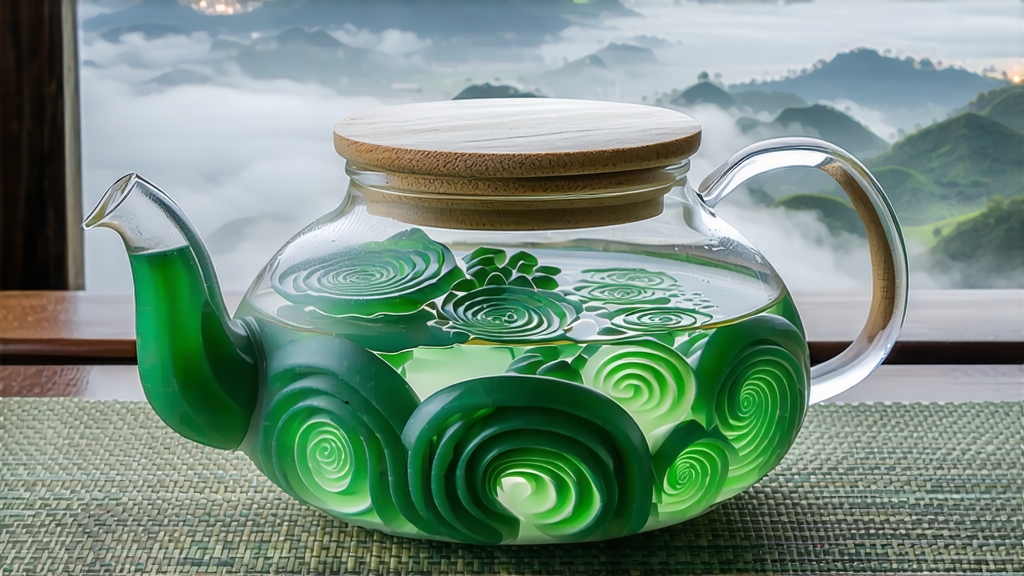
Tucked between the mist-laden banks of Lake Tai and the fruit-laden terraces of Dongting Mountain in Jiangsu Province, Biluochun—literally “Green Snail Spring”—is one of China’s most celebrated green teas, yet it remains a quiet revelation to many outside the Middle Kingdom. Named by the Kangxi Emperor in the seventeenth century after its tight spiral shape resembling a snail shell and its early-spring harvest, this tea carries within each downy curl the perfume of apricot blossoms, the mineral breath of granite soils, and the craftsmanship of four centuries.
History and Legend
Local chronicles trace Biluochun’s origins to the Tang dynasty (618-907), when monks on Dongting’s two peaks, Dong and Xi, cultivated small plots of tea between rows of peach, plum, and loquat trees. The interplanting was pragmatic: fruit trees provided shade, balanced humidity, and attracted pollinators, but it also imprinted the leaf with an unmistakable floral sweetness. A oft-told legend claims a tea picker, startled by the sudden appearance of a serpent, dropped her freshly plucked shoots into her basket of wild apricots; by evening the leaves had absorbed the fruit’s aroma, and the first “fragrant tea” was born. Whatever the truth, by the late Ming dynasty the tea—then called “Xia Sha Ren Xiang” (literally “scary fragrance”)—was already tribute-grade. The Kangxi Emperor, touring the south in 1699, found the name inelegant and rechristened it Biluochun, sealing its place in the imperial ledger and later among China’s “Ten Famous Teas.”
Micro-terroir and Harvest Calendar
Dongting Mountain is actually an island of 72 peaks rising from Lake Tai, China’s third-largest freshwater lake. The water body moderates temperature, creating a misty microclimate that delays budding and concentrates amino acids, especially L-theanine. Soils are acidic, a mix of weathered granite and lake sediment rich in iron and magnesium. Only the genuine “Dongting Original” produced within a 10 km² core zone may bear the coveted “Lake Tai Protectorate” seal; leaves from adjacent counties, even when identically processed, are labeled “Suzhou Biluochun” but command a fraction of the price.
Harvest begins around the Qingming festival (early April) when overnight temperatures still dip to 8 °C. The finest grade, “Qingming Special,” demands one unopened bud plus the adjacent leaf, plucked before seven a.m. while dew is present. A skilled picker gathers barely 500 g of fresh leaf in four hours; 5.5 kg of such leaf yields only 1 kg of finished tea.
Crafting the Spiral: Eight Hours from Leaf to Snail
Within thirty minutes of plucking, the fragile shoots are spread in bamboo trays no thicker than 2 cm to wither under soft mountain breeze. This 60–90 minute step reduces grassy notes and begins enzymatic conversion of proteins into free amino acids.
Next comes the only kill-green phase: pan-firing in woks heated to 180 °C. The tea master uses bare hands, rubbing the leaves against the iron surface in a rapid figure-eight motion for three minutes. The gesture is both destructive and creative: polyphenol oxidase is denatured, fixing the green color, yet the mechanical pressure pre-curls the leaf. Temperature is then dropped to 80 °C for the “first rub,” 15 minutes of light tossing that further shapes the shoot.
The signature spiral is locked in during the “second rub,” performed at 60 °C. Here the master presses the leaf against the wok with the heel of the palm while simultaneously rolling it outward, coaxing the shoot into a tight spiral. A subtle crackling sound—like distant sesame seeds popping—signals the correct moisture loss. The entire firing cycle lasts 40 minutes, after which moisture content stands at 20 %.
Finally, the tea is transferred to a charcoal brazier lined with gauze and dried at 50 °C for another 40 minutes. The embers are from local loquat wood, prized for a smokeless, sweet aroma. Finished Biluochun contains 5 % residual moisture and resembles tiny jade snails, each covered in silvery trichomes that shimmer under light.
Chemical Signature and Flavor Lexicon
High-grade Biluochun typically registers 4.2 % amino acids, 14 % polyphenols, and 2.9 %